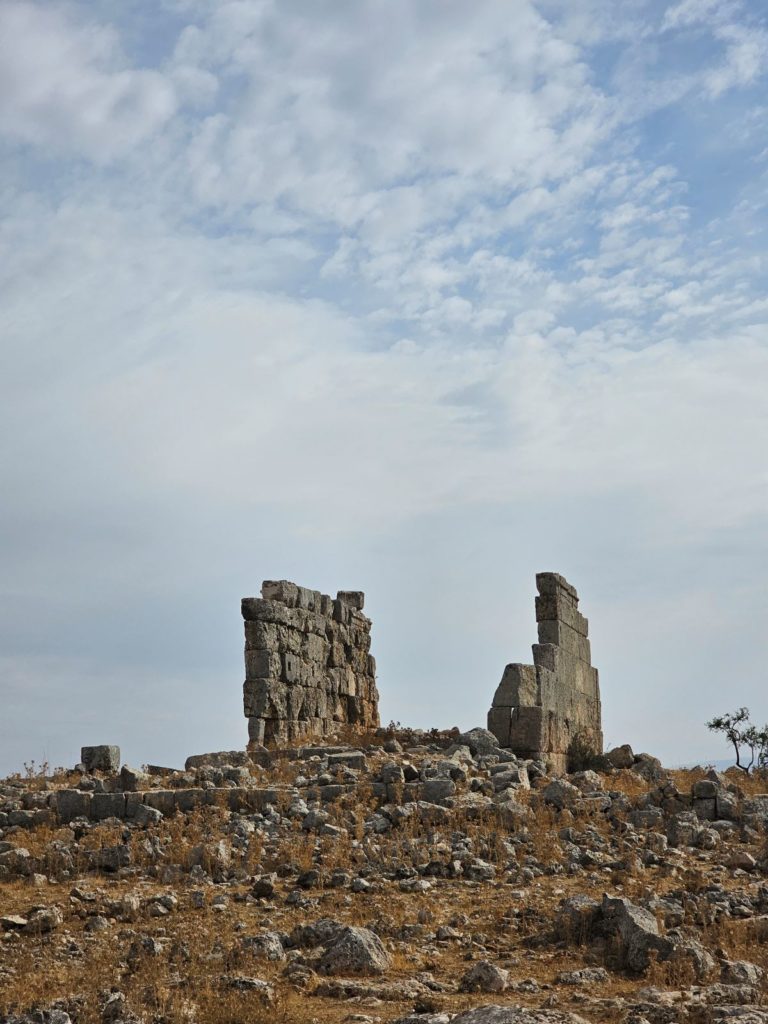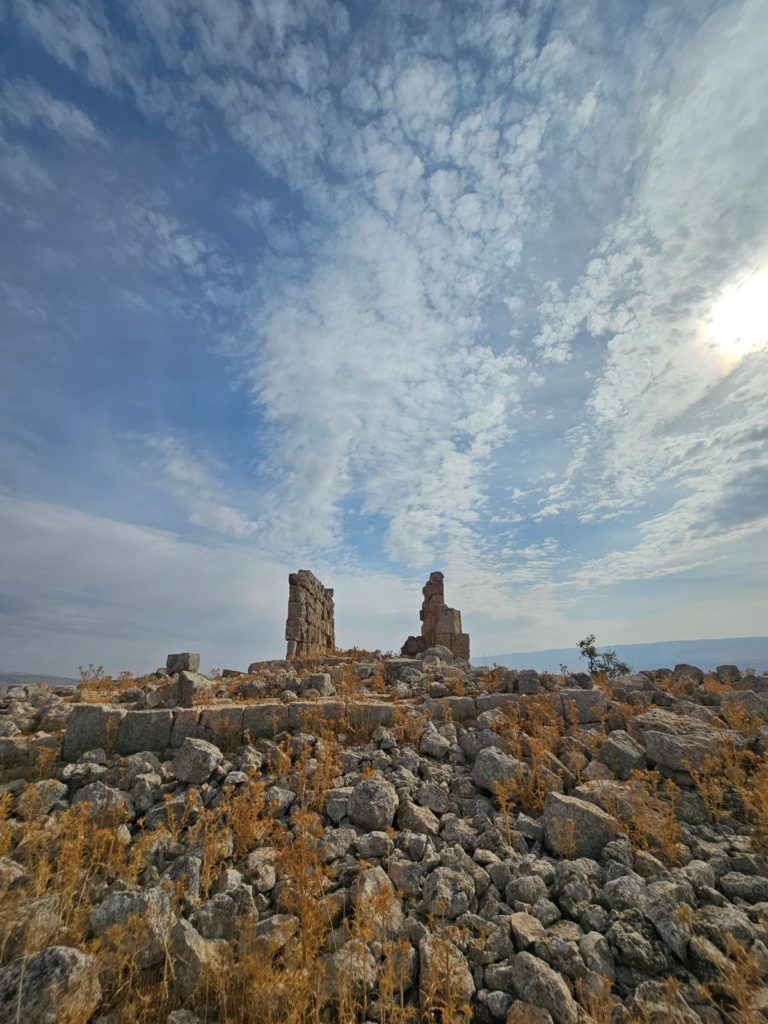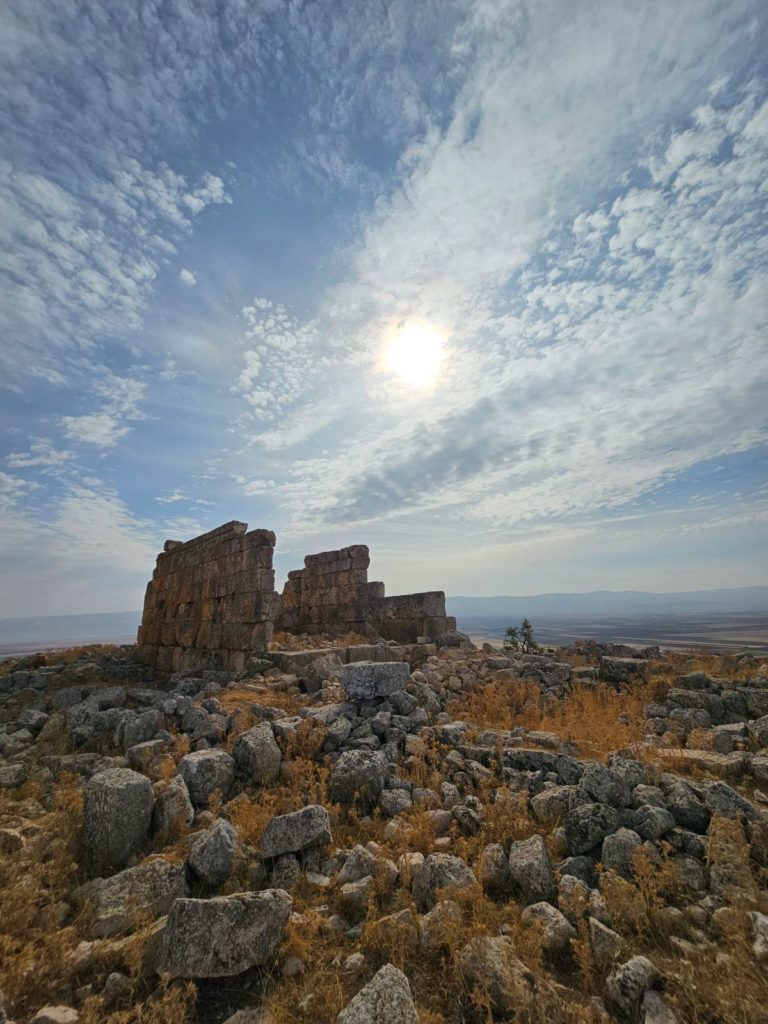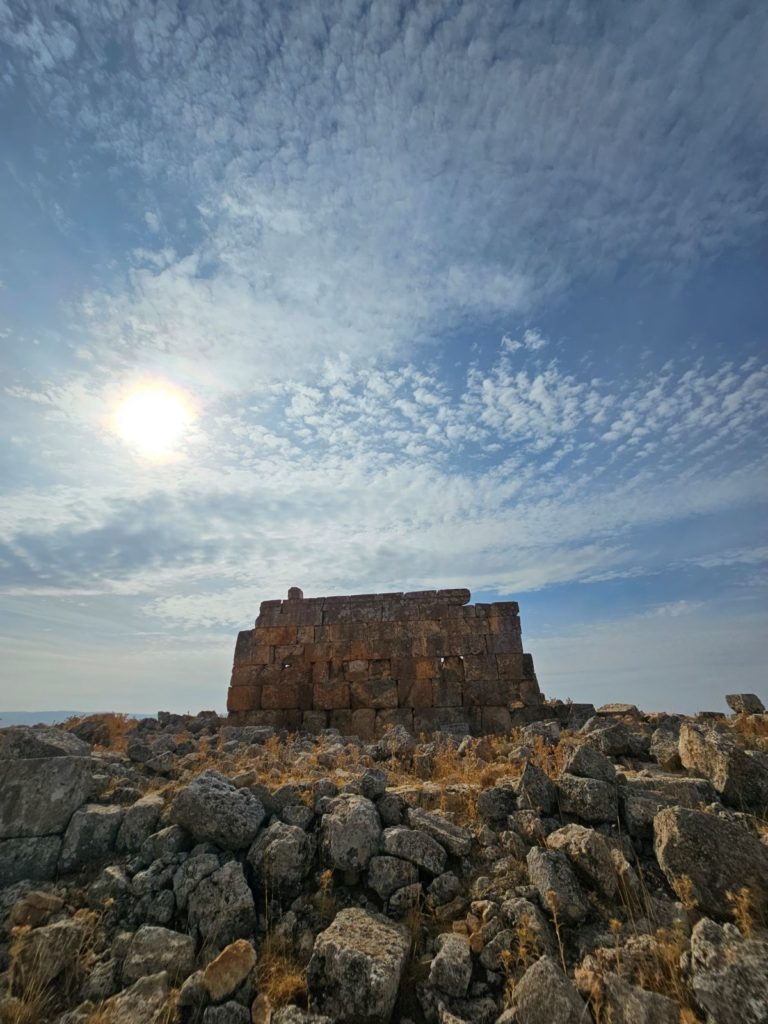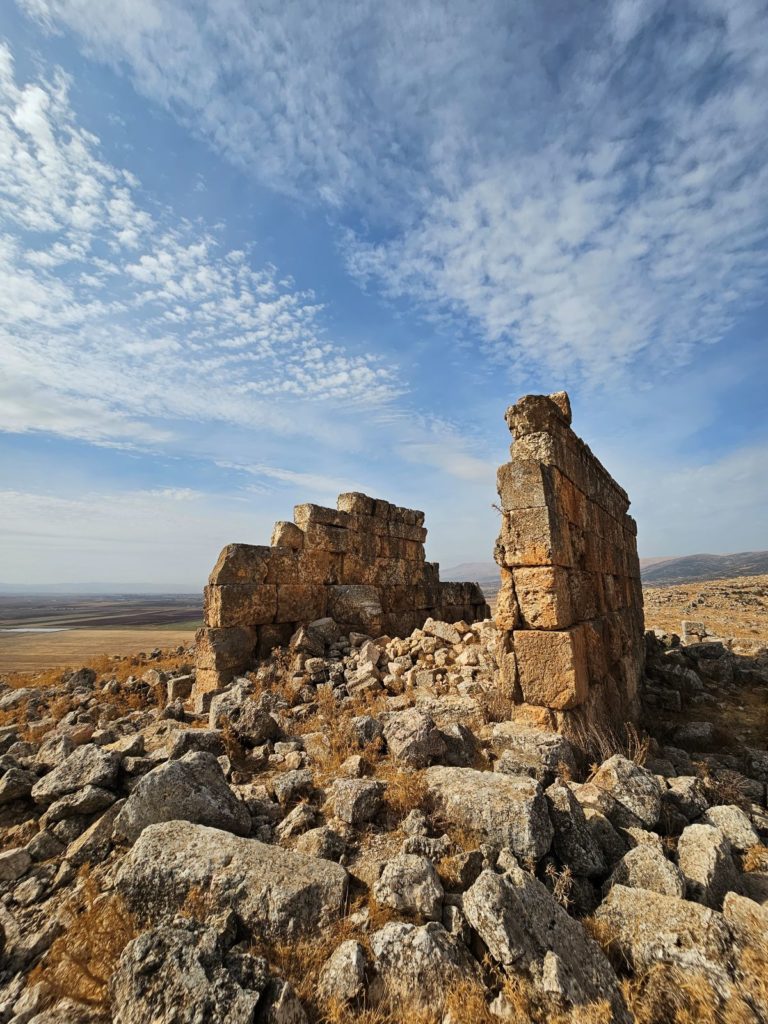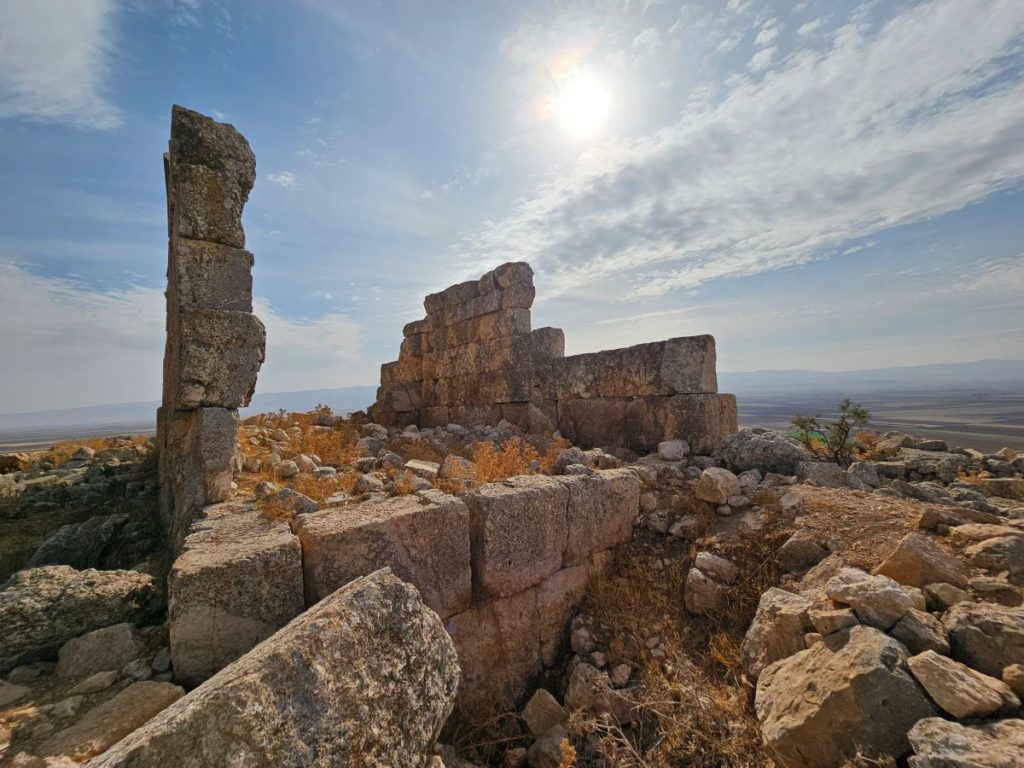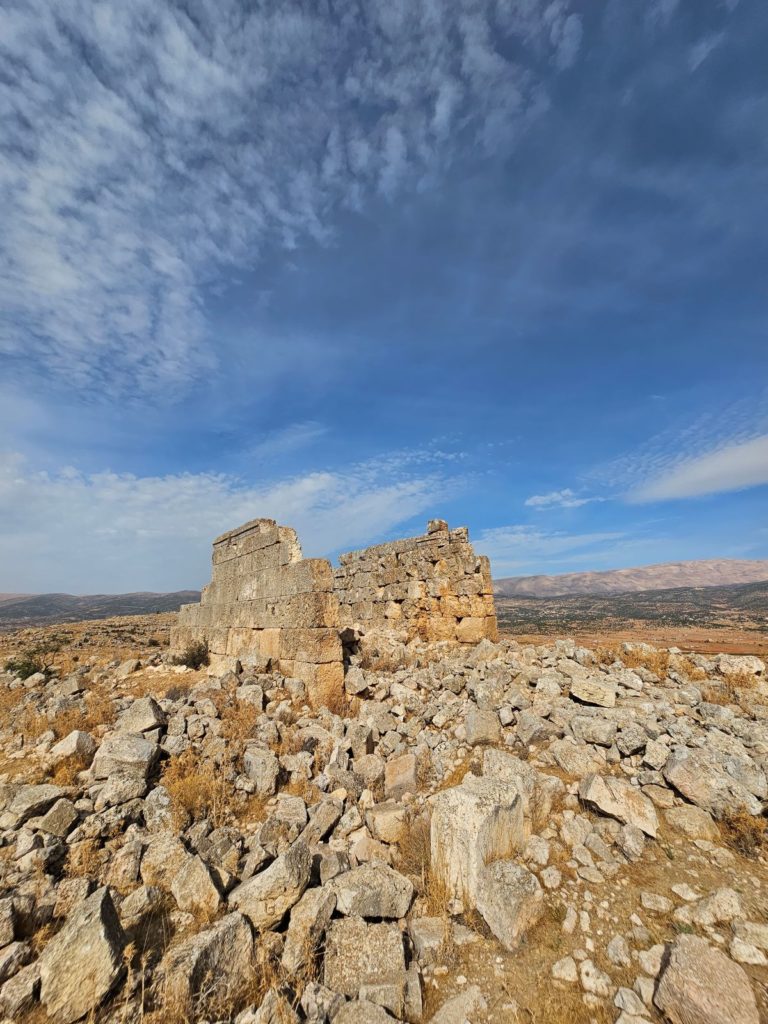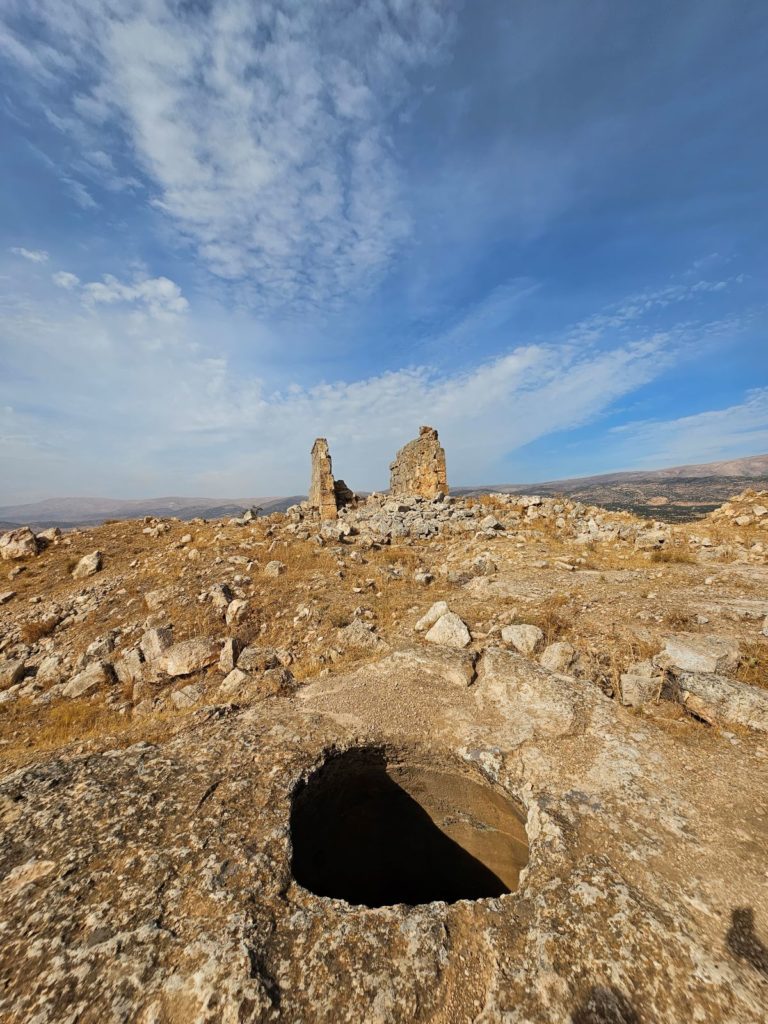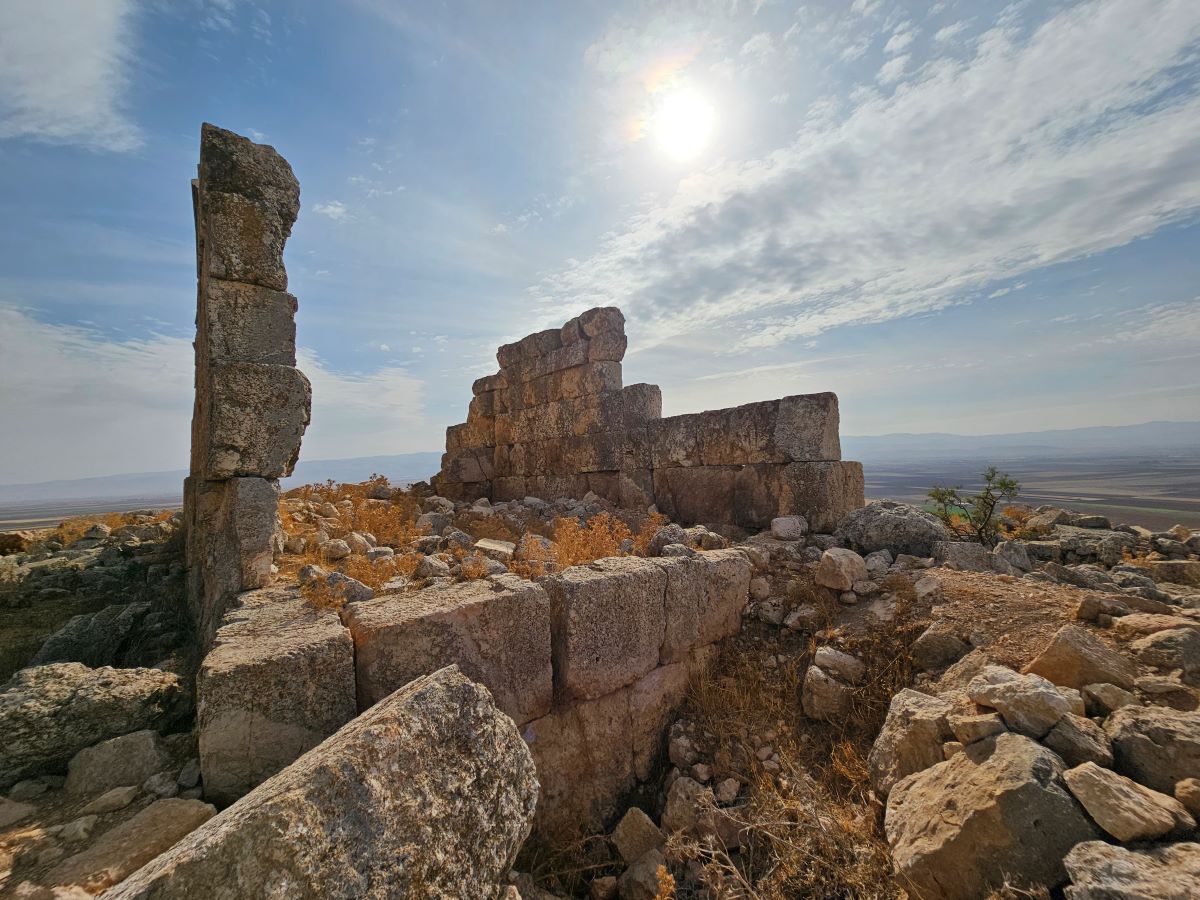Chlifa village houses the remnants of a Roman-era temple, at an altitude of 1090m.
The structure can be easily spotted from the village’s army checkpoint, and is accessible through a specific trail located directly behind checkpoint.
Structure
Locally known as “Qasr el-Banat”, the “Palace of the Girls”, the temple is surrounded by an enclosure (Temenos) which sides can still be seen.
Open to the east, the temple is a distyle type, which includes a pronaos and a cella at the bottom of which rose the platform of an adyton. Both outside and inside the building, the architrave is decorated with two smooth bands and not three, contrary to usual. A cistern is built inside the enclosure.
The cella is divided into two parts: a square section with a paved floor and a second section that used to be the adyton’s platform. A side door leads to a crypt beneath the temple, and there are some blocks outside that might belong to a separate shrine.
Archeologists argue that the absence of a podium, the small dimensions of the temple and the simplicity of its decoration can classify the sanctuary among the ancient temples of Lebanon (1st century AD). To the south, inside the peribole and parallel to the temple, they spotted the remains of a small Christian basilica with an apse.
Deity
The temple is claimed by locals to be dedicated to Vesta, the virgin goddess of the hearth, home, and family in Roman religion. This dedication lacks of archeological proof.
Karim Sokhn
Tour Operator & Tour Guide
References:
La Vie Religieuse Au Liban Sous L’Empire Romain – Julien Aliquo

